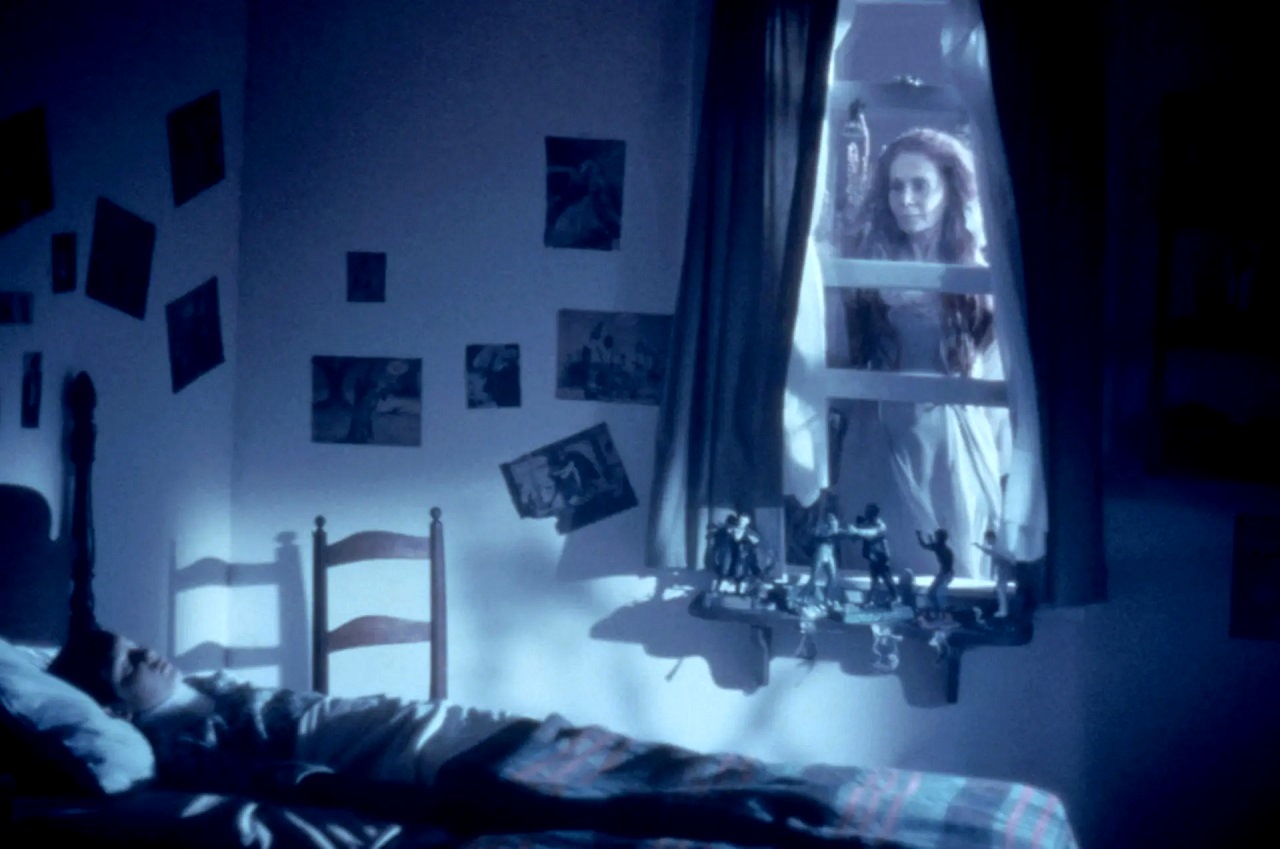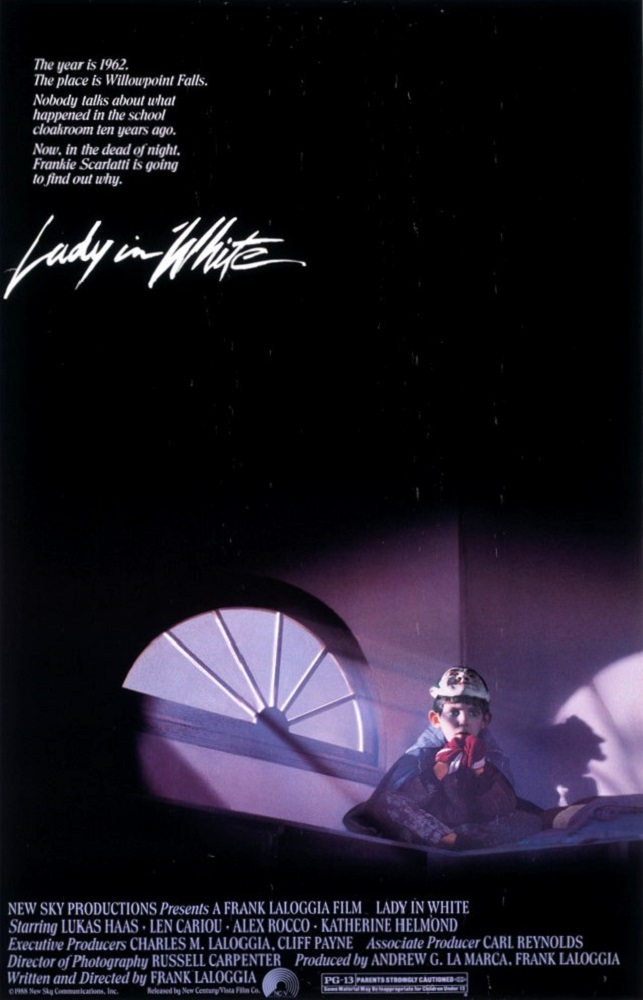Crew
Director/Screenplay/Music – Frank LaLoggia, Producers – Frank LaLoggia & Andrew G. La Marca, Photography – Russell Carpenter, Visual Effects Supervisors – Ernest D. Farino & Gene Warren Jr, Special Effects – Image Engineering (Supervisor – Peter Chesney), Production Design – Richard K. Hummel. Production Company – New Sky Communications.
Cast
Lukas Haas (Frankie Scarlatti), Jason Presson (Geno Scarlatti), Alex Rocco (Angelo Scarlatti), Len Cariou (Uncle Phil), Renata Vanni (Mama Assunta), Angelo Bartolini (Papa Charlie), Joelle Jacoby (Melissa Ann Montgomery), Katherine Helmond (Amanda Harper), Jared Rushton (Donald), Lucy Lee Flippin (Miss La Della), Henry Harris (Harold Williams), Rita Zohar (Agnes Cilak), Roe Weaver (Molly Williams), Karen Powell (The Lady in White)
Plot
1962 in the town of Willowbank Falls. Ten year-old Frankie Scarlatti is locked in a school cloakroom overnight by two bullies. While there he sees the ghost of a girl from ten years before and witnesses a re-enactment of her strangulation. During the struggle, the killer drops something that falls down into the heating duct. Moments later, the real killer bursts into the cloakroom to try and find the missing object, which will be found and expose their identity when the new school boiler is installed. Finding Frankie there, the killer attempts to strangle him. As he starts to expire, Frankie has an out-of-body experience where he meets the dead girl who tells him that she wants him to find her mother. Frankie survives the attempt to kill him. Aided by the girl’s ghost, tries to find the killer’s identity as the killer now comes after him.
Lady in White – not to be confused with the classic Wilkie Collins Gothic novel The Woman in White (1859) – is one of the rare (and the best of the) films from Frank LaLoggia, a promising director of frustratingly sporadic output. Frank LaLoggia has only made three films in fifteen years – see also the Anti-Christ film Fear No Evil (1981) and the psycho-thriller Mother (1996) – and nothing for the last twenty years. Fear No Evil had not been a happy experience for LaLoggia and so he and his cousin raised the $5 million budget for Lady in White by selling options for it on the sharemarket, which essentially allowed LaLoggia to make the film he wanted. On the basis of Lady in White, one wishes that Frank LaLoggia would be granted further opportunities to make films.
Lady in White is a remarkable and haunting ghost story. Frank La Loggia – acting as director, writer, producer and composer – creates a beautiful and charming American nostalgia film. LaLoggia’s evocations of a smalltown childhood – blowing leaves, happy small businessmen, the nearby city on the horizon stretching away around the bay – is almost pure Ray Bradbury. There is a bicycle ride through the town early in the film with the two brothers dodging braking cars at an intersection, being followed by a horde of dogs and careening through a Catholic school outing where the Mother Superior’s glare is enough to turn the dogs, which is absolutely joyous. The characterisations of the Italian family, particularly the running gag about the grandfather’s sneaking away to smoke, is very well done.

LaLoggia also knows how to turn the child’s eye viewpoint in on itself to remarkable effect – the strangling of Lukas Haas in the cloakroom and the climactic fight on the cliff-edge are extremely tense and well sustained scenes. LaLoggia’s imagery can be both tender and frightening at the same time – toy windmills are suddenly transposed with life-size ones on the cliffside, a collection of Famous Monsters models suddenly becomes scary when silhouetted against a billowing curtain. Even when LaLoggia is kidding, like the reading of the story The Beast That Destroyed London, a marvellous piece of mimicry of a child’s writing, Lady in White achieves a remarkable balance between the deliberate effect it is inviting while gently poking fun at it at the same time.
Most haunting of all is the imagery when La Loggia leaps off into what might be almost termed divine surrealism – his solarized flight into the sun and visions of the future, meetings with Joelle Jacobi in off-colour cemeteries; of the sequence where the Lady in White jumps from the cliff, sprouting angel wings and the image becomes transposed over Lukas Haas’s eyes and dramatically intercut with that of Katharine Helmond reaching out. A beautifully tender and haunting ghost story.
Full film available online here:-


